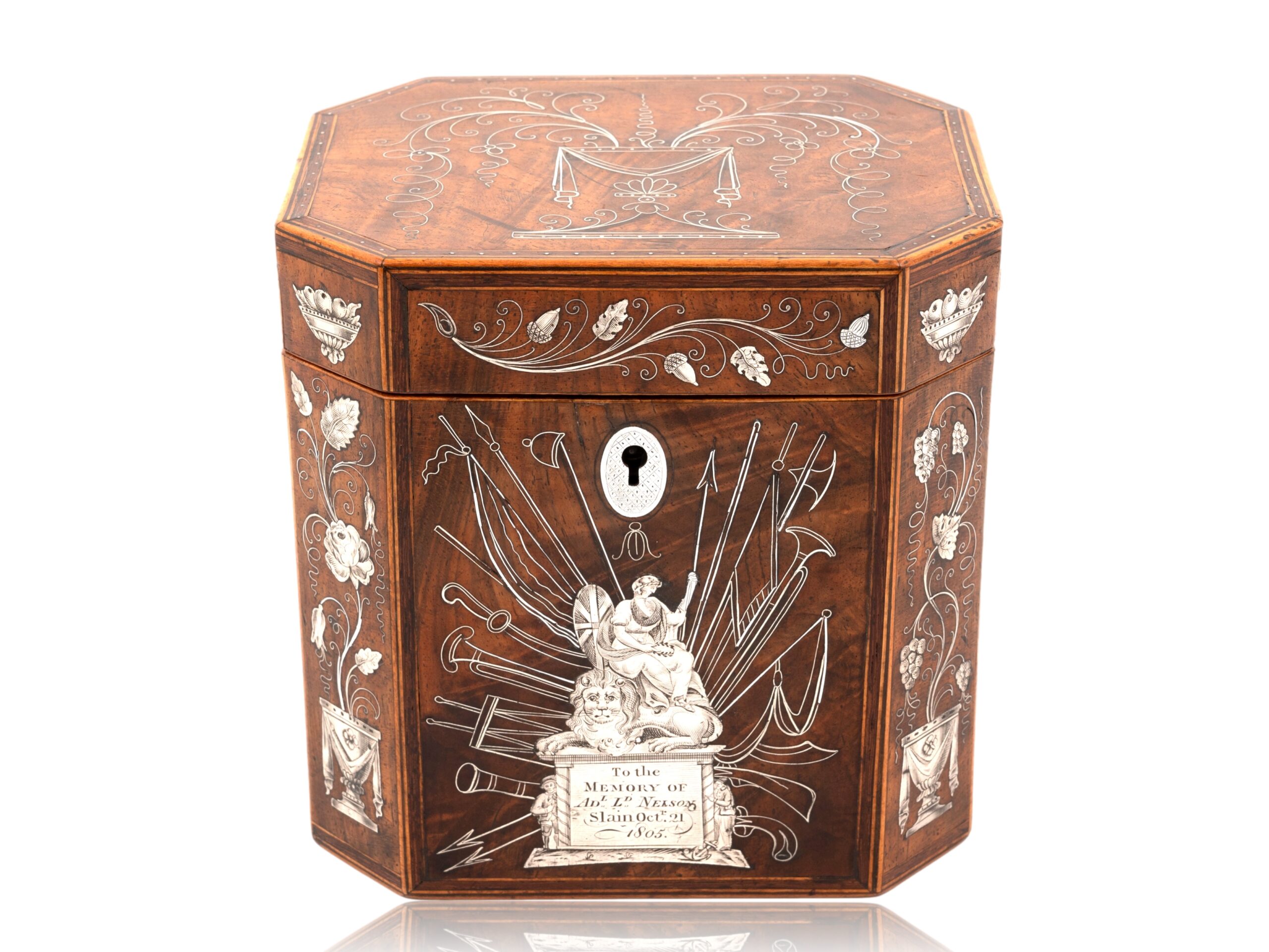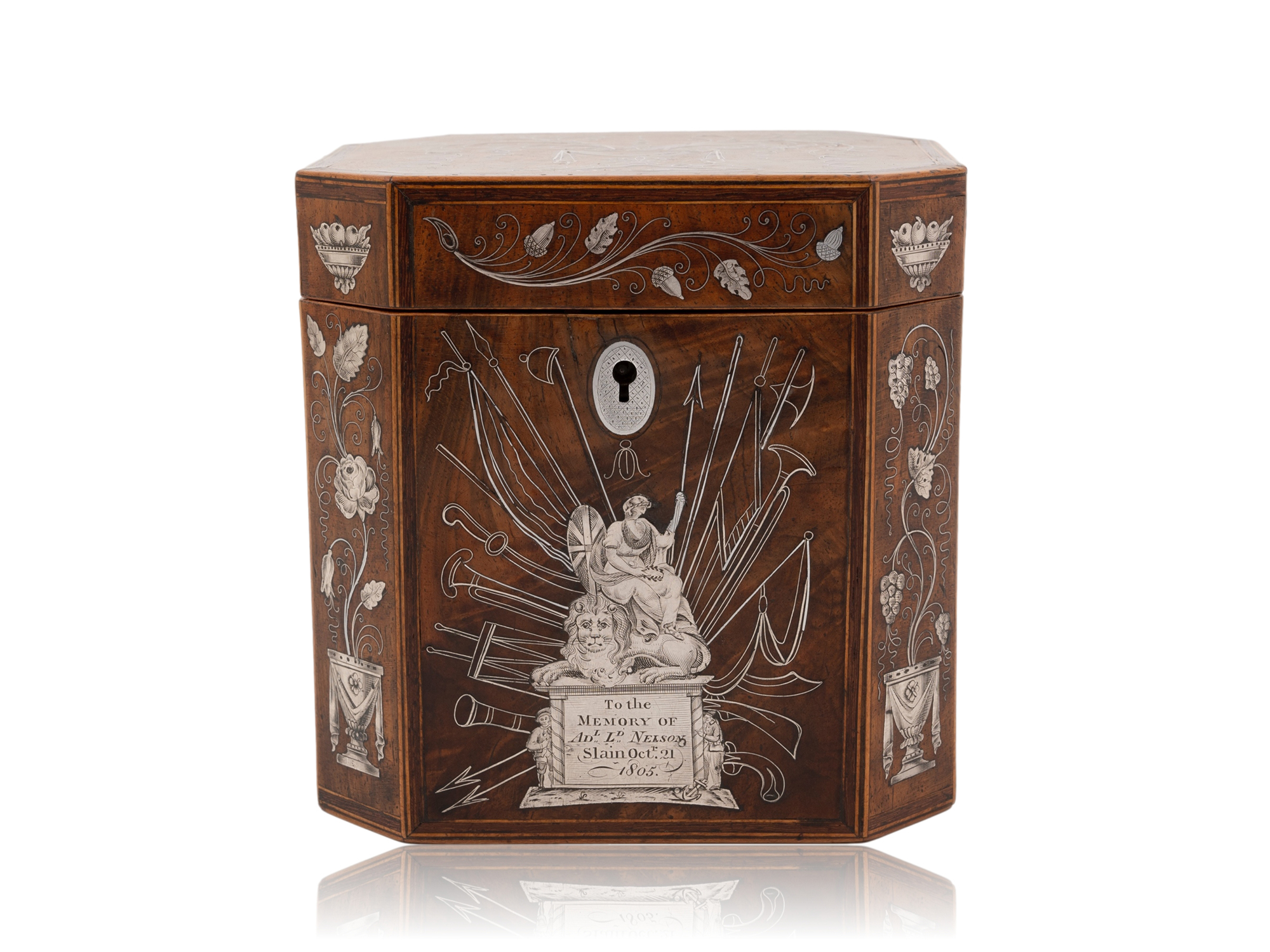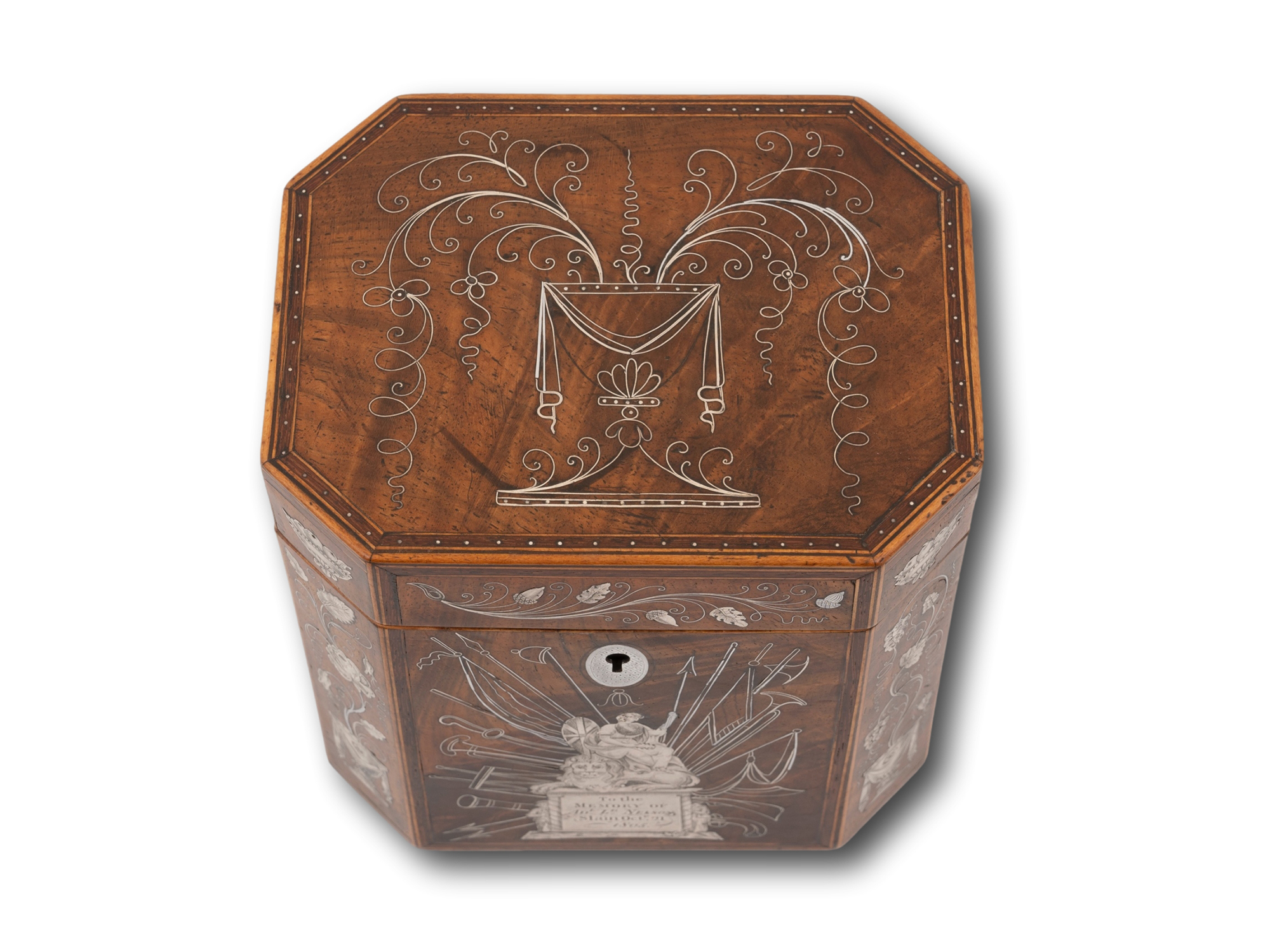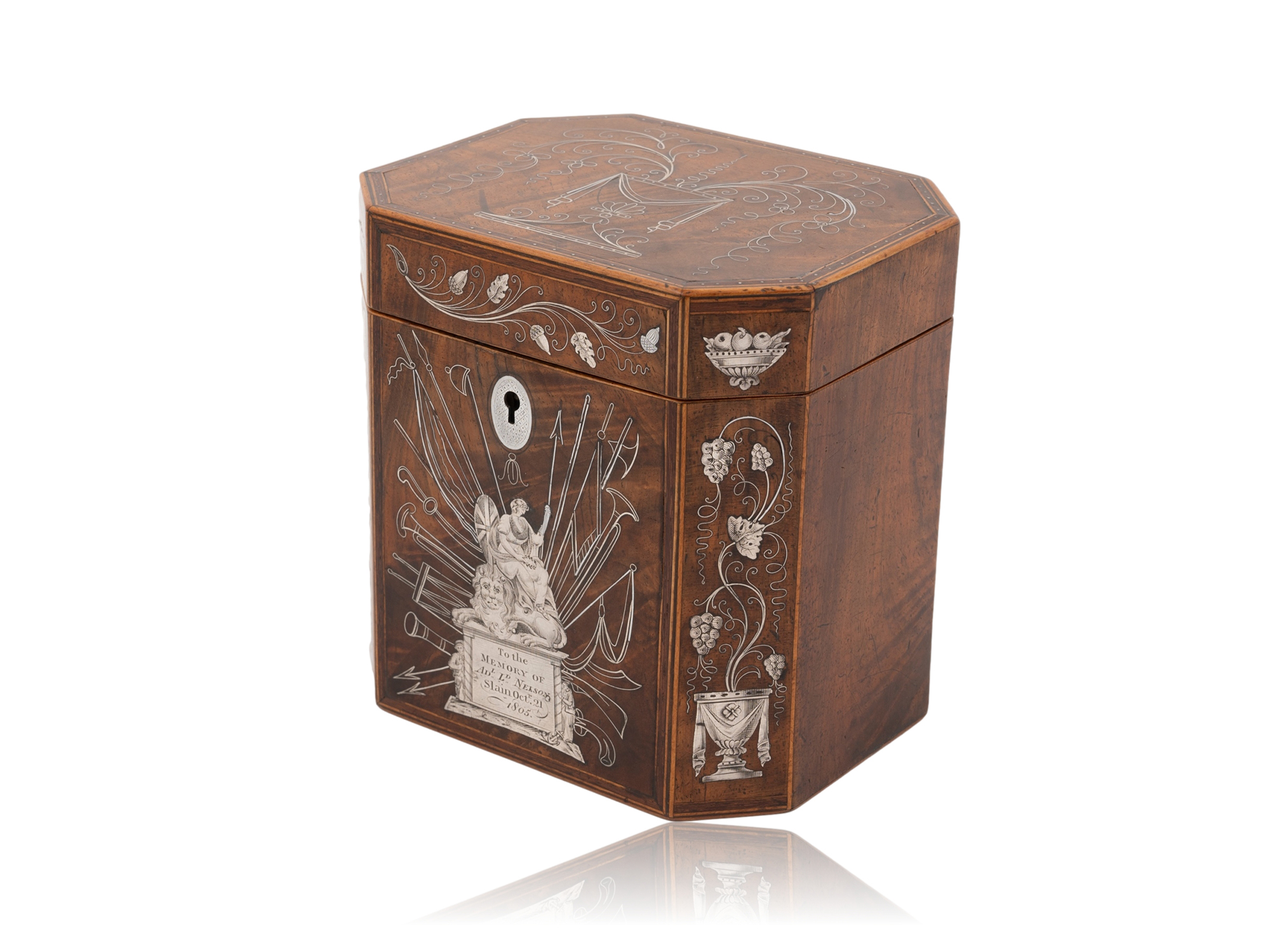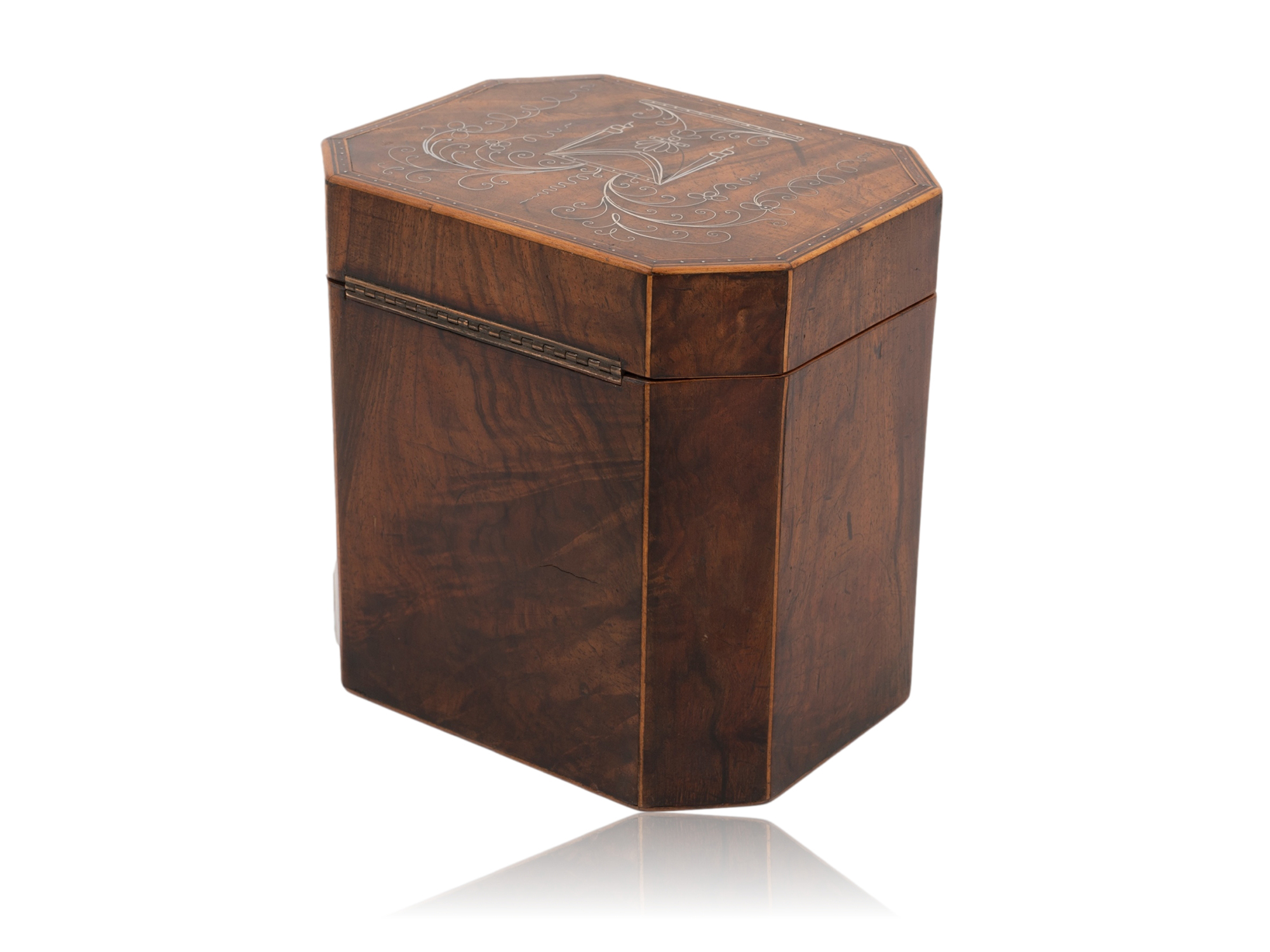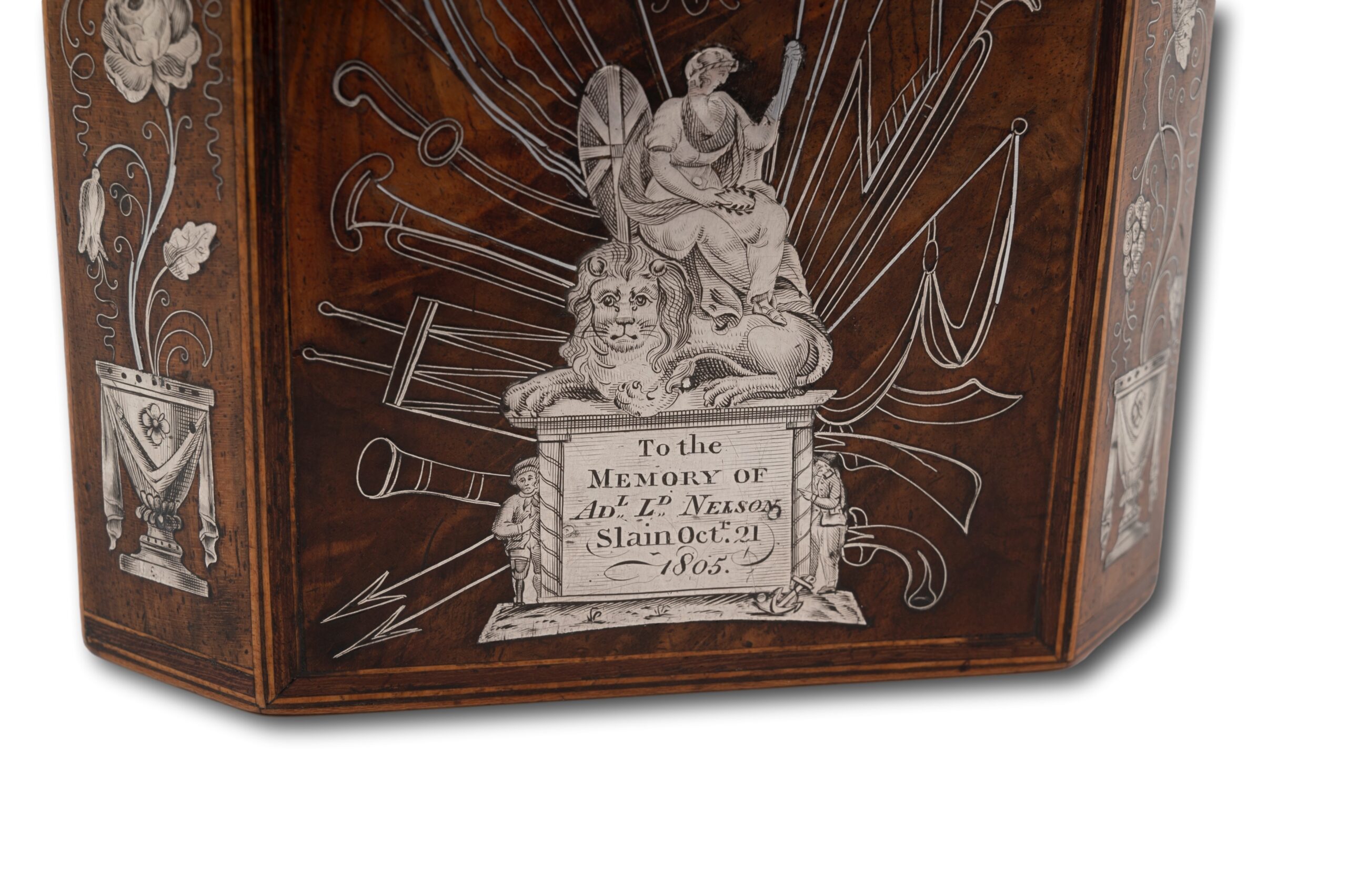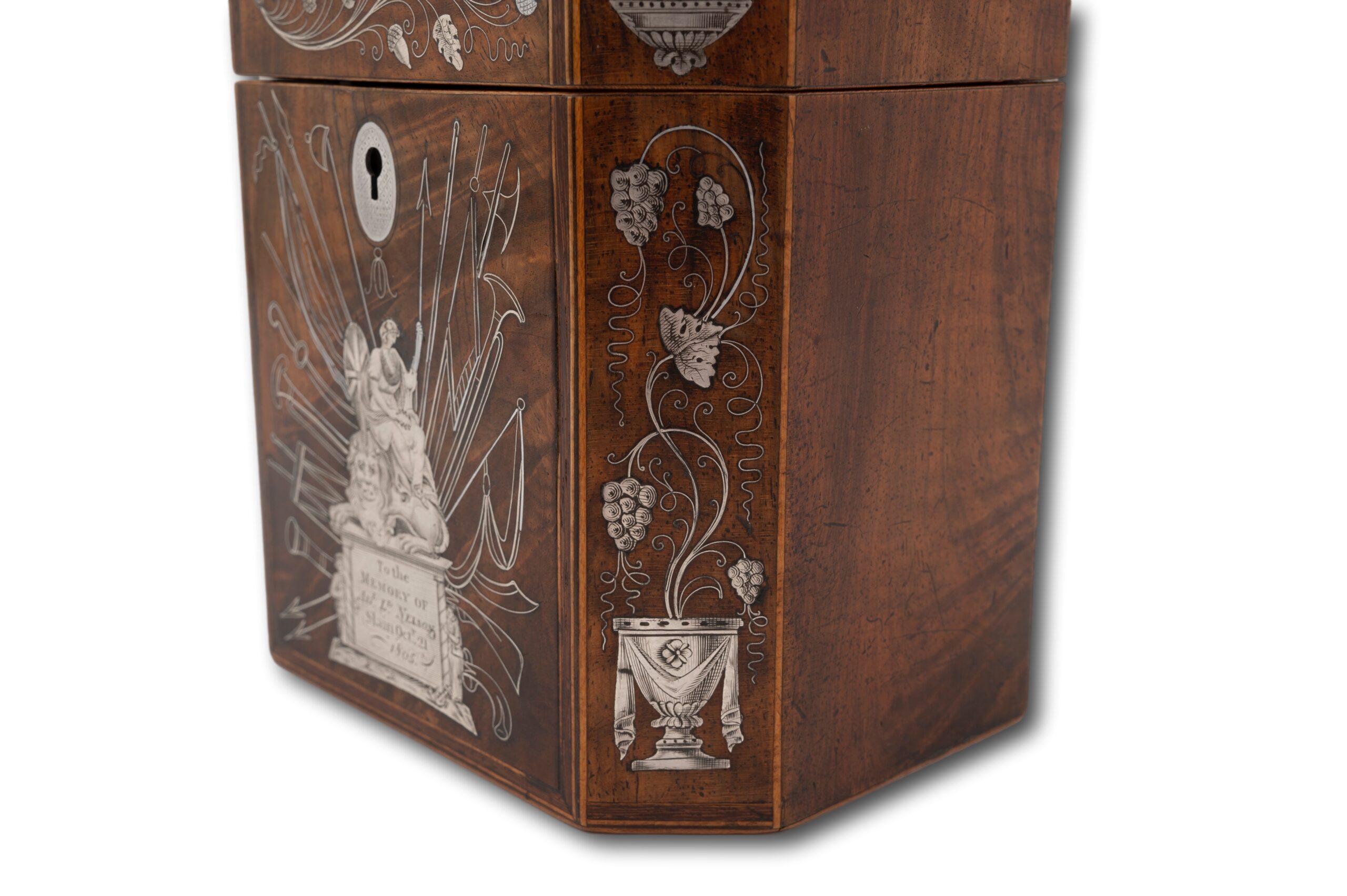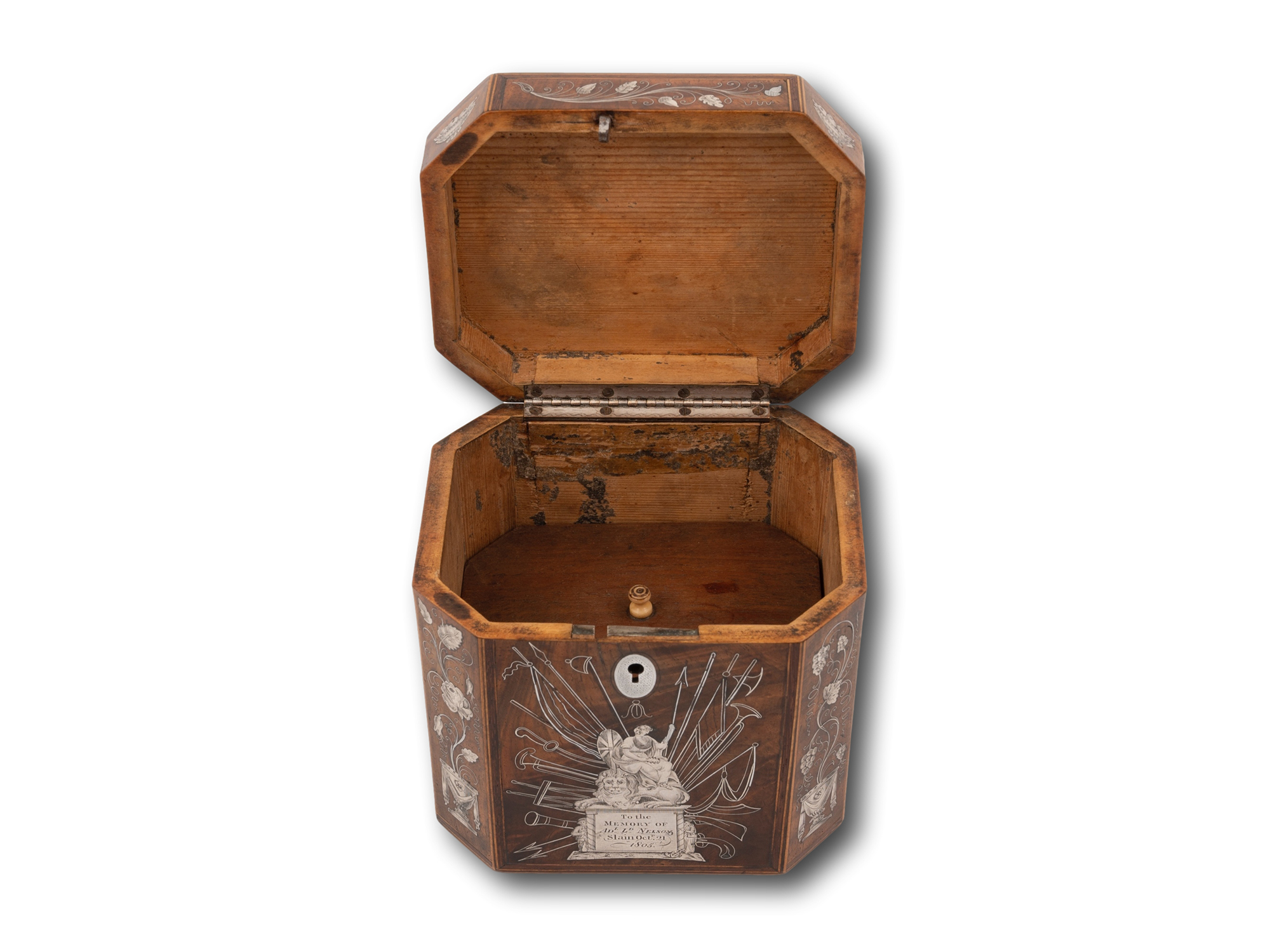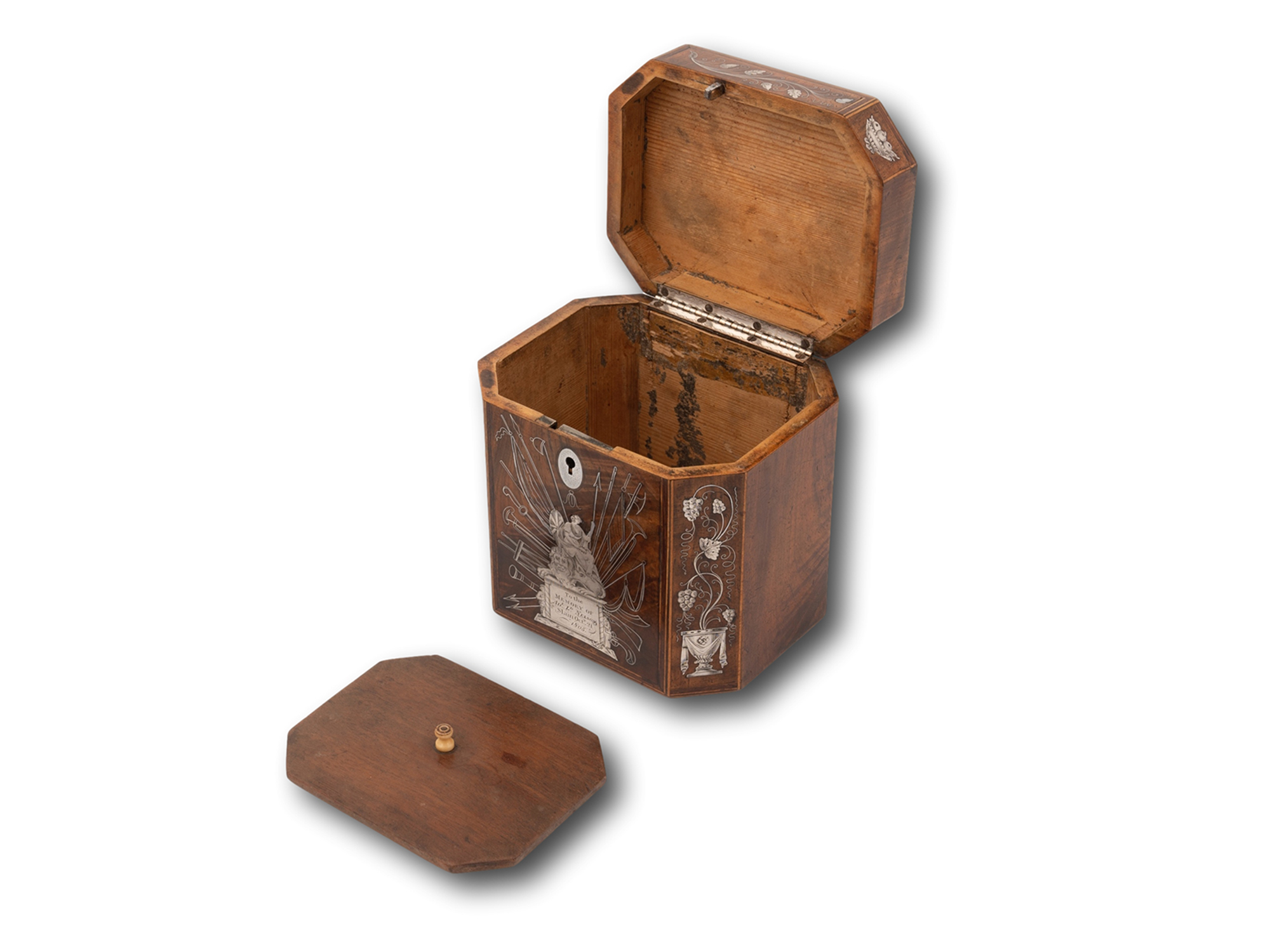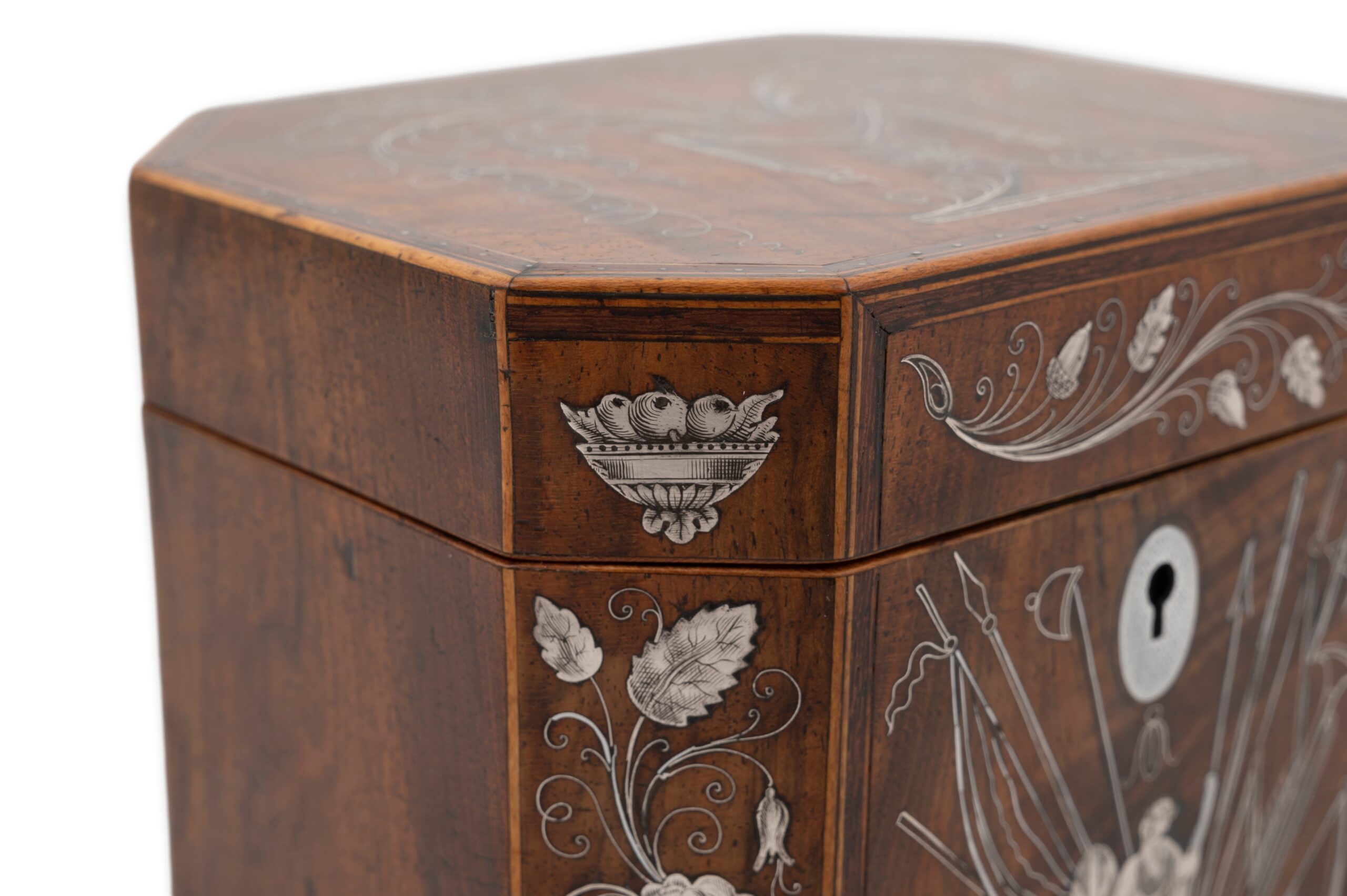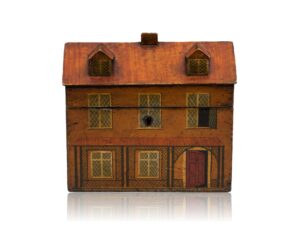Admiral Nelson Commemorative Tea Caddy
SOLD
Circa 1805 From our Tea Caddy collection we are delighted to bring to market this Admiral Nelson Walnut Tea Caddy. The Tea Caddy of square form with canted corners veneered in English Walnut and edged in Boxwood. The canted corners... Read More
Admiral Nelson’s Tomb
| Dimensions | 12 × 10 × 11 cm |
|---|---|
| Country | |
| Medium | |
| Period | |
| Year | |
| Literature | |
| SKU | 501503 |
Description
Description
Circa 1805
From our Tea Caddy collection we are delighted to bring to market this Admiral Nelson Walnut Tea Caddy. The Tea Caddy of square form with canted corners veneered in English Walnut and edged in Boxwood. The canted corners feature inlaid silver classical urns with floral vines stemming out of the urns whist the top features further inlaid silver depicting scrollwork and classical motifs. The front of the Tea Caddy features a commanders panoply including a cannon, drum and standards amongst a range of weapons. To the centre is Admiral Nelson’s tomb surmounted by Britannia seated on a recumbent lion inscribed “To the Memory of Adl Ld Nelson Slain Octr. 21 1805.” The inside of the Tea Caddy is finished with a floating lid with a turned handle and traces of the original silver foil lining. We believe the tea caddy was specially commissioned to commemorate the death of Horatio Nelson, 1st Viscount Nelson. The Tea Caddy dates to the early 19th century during the Georgian period and the latter years of George III reign circa 1805.
Measurements (inches) 4.33 High x 4.72 Wide x 3.95 Deep
Literature Mark Goodger 25th Anniversary Catalogue p.6
Vice-Admiral Horatio Nelson (1758–1805) was born on 29 September 1758, at a rectory in Burnham Thorpe, Norfolk. He was a distinguished British naval commander celebrated for his exceptional leadership and tactical brilliance during the Napoleonic Wars. He is most famous for his pivotal role in major naval engagements, especially the Battle of Trafalgar in 1805, where he achieved decisive British naval dominance and famously declared, “England expects that every man will do his duty.” Throughout his career, Nelson endured significant injuries, including the loss of his right arm and sight in one eye, yet his daring strategies and innovative tactics solidified his status as a prominent figure in British history. He died at Trafalgar, emerging as a national hero and an enduring symbol of British naval strength.
Nelson’s Tomb the sarcophagus which is depicted on this Tea Caddy is located in the vault under the dome of St Paul’s Cathedral in london. It was originally intended for Cardinal Wolsey, but presented by his present Majesty George 3rd to entomb the body of Horatio Viscount Nelson. The black marble sarcophagus was made by Benedetto da Rovezzano (1474-1552) who was a well-known Florentine sculptor working in England from 1519 to 1543, Cardinal Wolsey originally being his principal patron was already disgraced but pardoned by Henry VIII and allowed to retire to Yorkshire, he was arrested and sent to London in 1530 after a false accusation of treason. He died on the way at Leicester Abbey and was buried there in an unknown grave. Henry VIII subsequently appropriated his uncompleted tomb project, commissioning Benedetto to repurpose it for himself, but it was not finished in his lifetime and while his three children (Edward VI, Mary I and Elizabeth I) intended to complete it posthumously for him, none did so.
Walnut comes in many varieties from America to Europe. American Walnut is often a warm yellow-brown to purple-brown colour with a straight grain. European Walnut tends to vary greatly from tree to tree in terms of colour and pattern. From light grey-brown to dark brown with dark grain and irregular markings. Walnut trees often develop large burr growths which when veneered show beautiful rich coloured swirls.
Boxwood “Buxus sempervirens” can be found in Europe, Northwest Africa and Southwest Asia. It is a light cream that turns darker to brown when exposed to light. The trees are very small meaning it is suited to smaller projects like edging or inlay instead of veneers.
Georgian, a period in British history dating from 1714-1837, the Georgian era after the Hanoverian kings George I, George II, George III and George IV.
With every purchase from Mark Goodger Antiques, you will receive our latest catalogue, a Certificate of Authenticity, detailed care instructions for your chosen piece and an independent invoice (for insurance purposes) will be enclosed. As well as being protected by a no-hassle, money-back policy, your piece will be entirely insured during the shipping process to ensure the safety of your item.
Additional information
Additional information
| Dimensions | 12 × 10 × 11 cm |
|---|---|
| Country | |
| Medium | |
| Period | |
| Year | |
| Literature | |
| SKU | 501503 |
